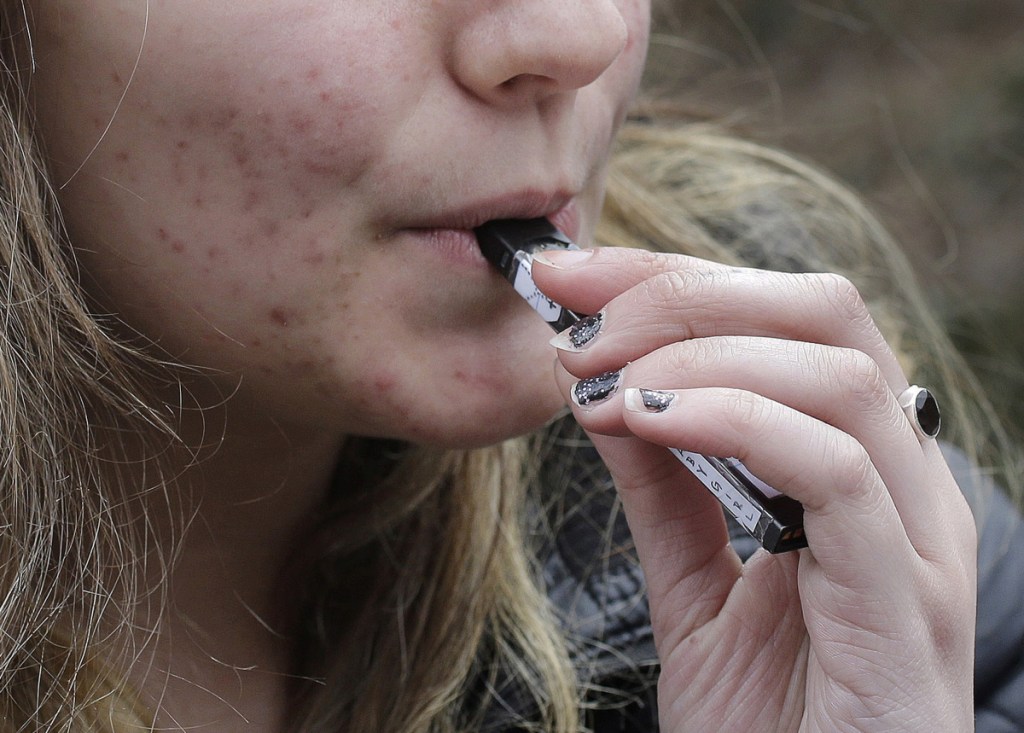The proportion of U.S. high school seniors who are vaping tobacco products nearly doubled in the past year, with more than 1 in 5 now saying they have vaped to get a hit of nicotine in the past 30 days, according to a new study.
The prevalence of nicotine vaping nearly doubled among 10th-graders as well, with nearly 1 in 6 using the electronic devices, researchers reported Monday in the New England Journal of Medicine.
The findings suggest that the total number of high school students using tobacco surged by 1.3 million between 2017 and 2018. “This increase was driven solely by nicotine vaping,” the researchers wrote.
The figures are based on a nationwide survey of eighth-, 10th- and 12th-graders who participated in the Monitoring the Future study, which has tracked teen use of tobacco, alcohol, illicit drugs and other substances every year since 1975.
In all that time, the researchers who conduct the survey have never seen a drug’s popularity explode the way vaping did in the past year.
“The absolute increases in the prevalence of nicotine vaping among 12th-graders and 10th-graders are the largest ever recorded by Monitoring the Future in the 44 years that it has continuously tracked dozens of substances,” wrote a team led by Richard Miech, who leads the study at the University of Michigan’s Institute for Social Research.
When electronic cigarettes first took hold among U.S. teenagers nearly a decade ago, public health experts fretted that the slick devices would lure a new generation of kids into tobacco use.
The new report vindicates their fears.
Makers of vaping devices say their products are intended for use by adults, particularly smokers who would like to cut back on regular cigarettes by switching to a less-toxic alternative.
Juul, the company that now dominates the market, says its mission is to create “a world where fewer people use cigarettes, and where people who smoke cigarettes have the tools to reduce or eliminate their consumption entirely, should they so desire.”
Unlike traditional cigarettes, which burn tobacco, e-cigarettes use a battery to heat a liquid that is inhaled in an aerosol form. That liquid usually contains nicotine along with a mixture of chemicals and flavorings. Juul’s starter pack includes “pods” with flavors like mango, mint and crème.
Other e-liquid flavors seemed to be squarely aimed at kids, with packages that resembled frosted cookies and sour candies.
The U.S. Food and Drug Administration ordered online retailers to stop selling such products in September as part of a broad initiative to reduce teen vaping. At the time, FDA Commissioner Scott Gottlieb said vaping had produced an “epidemic of nicotine addiction” among America’s youth, with a prevalence that was “simply not tolerable.”
The Monitoring the Future researchers agreed that stronger action was needed to keep vaping devices beyond the reach of minors.
Send questions/comments to the editors.



Success. Please wait for the page to reload. If the page does not reload within 5 seconds, please refresh the page.
Enter your email and password to access comments.
Hi, to comment on stories you must . This profile is in addition to your subscription and website login.
Already have a commenting profile? .
Invalid username/password.
Please check your email to confirm and complete your registration.
Only subscribers are eligible to post comments. Please subscribe or login first for digital access. Here’s why.
Use the form below to reset your password. When you've submitted your account email, we will send an email with a reset code.